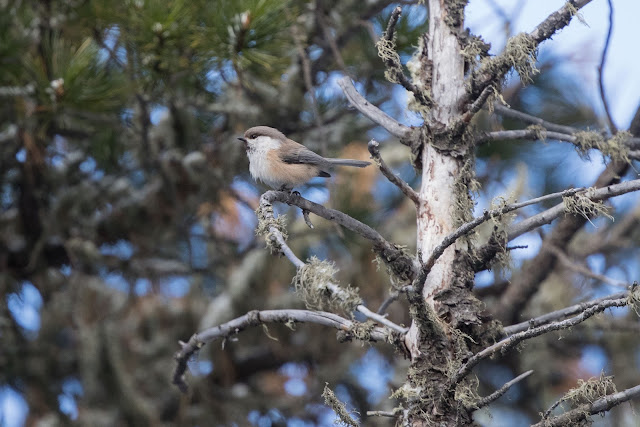Male Black-billed Capercaillie - Mungunmorit
Male Black-billed Capercaillie, this bird has lost some of its facial feathers presumably during aggressive encounters during lekking - Mungunmorit
We spent the rest of the morning birding in the forest seeing Two-barred Crossbill, Red Crossbill, Pine Bunting, Red-flanked Bluetail, Treecreeper, Great Spotted Woodpecker, Three-toed Woodpecker, Lesser Spotted Woodpecker and Eastern Buzzard. There was clearly some visible migration in progress with around 30 Olive-backed Pipit, 60 Red-throated Thrush and two Dusky Thrush north over. Our descent back through the forest produced two obliging Three-toed Woodpecker on the same tree as two Great-spotted Woodpecker. The highlight though was a stunning Ural Owl which showed very well amongst a stand of more mature Pine, Larch and Willow.
Grey-headed Woodpecker of the subspecies jessoensis which is overall paler and greyer on the back then the nominate European race- Mungunmorit
Black-billed Capercaillie - Mungunmorit
Male Great Spotted and Female Three-toed Woodpecker - Mungunmorit
Male Three-toed Woodpecker - Mungunmorit
Male Great Spotted and Female Three-toed Woodpecker - Mungunmorit
Ural Owl - Mungunmorit
Ural Owl - Mungunmorit
Ural Owl - Mungunmorit
Daurian Redstart - Mungunmorit
Female Lesser Spotted Woodpecker - Mungunmorit
Willow Tit of subspecies baicalensis - Mungunmorit
Larch forests at Mungunmorit
Pine and Larch forests at Mungunmorit
Pine and Larch forests at Mungunmorit
There were few plants in bloom at Mungunmorit but this iris species was fairly common
As was this Pasque Flower which is said to be a food of the Capercaillie
A surprising find in the vegetation, a Russian AK-47 which Tumen assesses, he thinks it
may have been lost by hunters
Packing up the campsite at Mungunmorit
On the road towards Möngönmorit
Sheltering in a Get with from left to right, Lorand, Jon, Duncan, Barry and Richard
Traditional lamb dumplings being made for lunch
Outside the Ger
As we approached Ulaanbaatar it started to snow
Climbing through the Birch and Pine Forests to the birding area north of Gachuurt
Climbing through the Pine Forests to the birding area north of Gachuurt
Birding the Pine Forests to the birding area north of Gachuurt, it was bitterly cold
Pine and Larch Forest near north of Gachuurt
Dipping Siberian Jay but still happy to be birding
Siberian Tit of subspecies sayanus - North of Gachuurt
Siberian Tit of subspecies sayanus - North of Gachuurt
Siberian Tit of subspecies sayanus - North of Gachuurt
Poor views of male Hazel Grouse of subspecies sibirica as the light faded - North of Gachuurt
Links to Other Days of the Trip (Click to View)


































